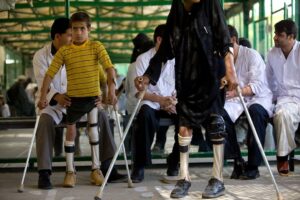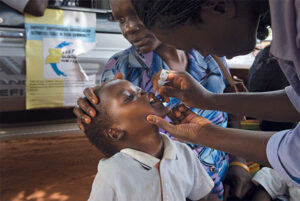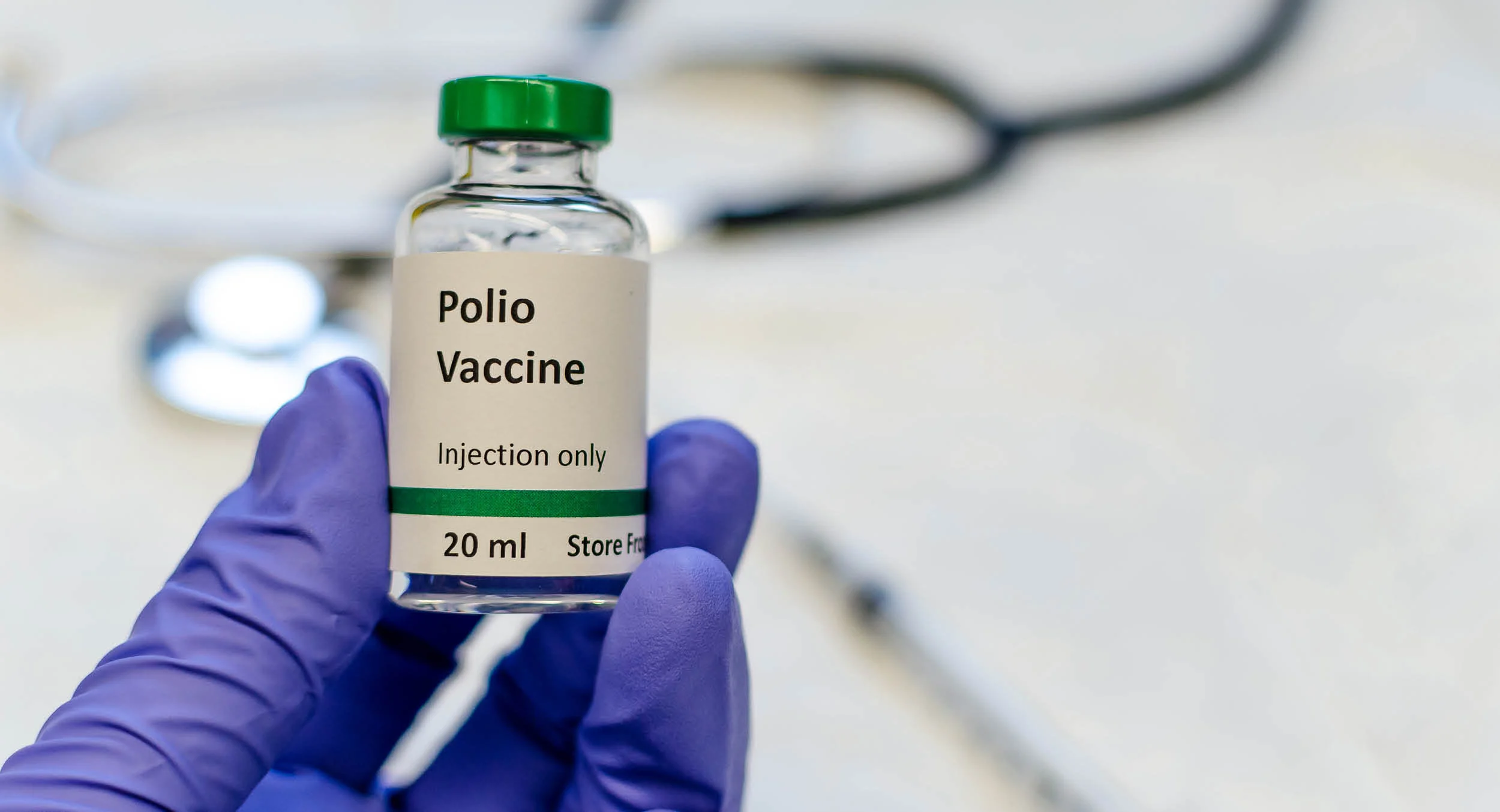It is exhausting yet frightening to learn that polio has partially paralyzed a young man in a New York suburb. Wearying because, after monkeypox and SARS-CoV-2, it is the third highly contagious virus to unexpectedly make landfall in the US in the last three years. And alarming because polio hasn’t spread in wealthy countries for decades, where good public health financing, vaccinations, and sanitation are assumed to keep populations safe. In the US in 1979, throughout the Americas in 1994, and in the UK in 2003, the transmission was completely eradicated. But there it was, in the sewage of the young man’s county and a nearby one, in New York City, as well as in London.
Polio does, of course, exist in other regions of the world. Since 1988, a global effort has been making strenuous efforts to eradicate it. In two nations where the polio virus had never been contained and another 21 where it had returned, the disease paralyzed people last year; this paralysis is incurable.
However, health professionals were not shocked to see it return to Western countries. They have watched for years as budget reductions, vaccine reluctance, amnesia, and the virus’s cunning nature have all damaged efforts to prevent the disease. Professor Heidi Larson, who founded the Vaccine Confidence Project at the London School of Hygiene and Tropical Medicine, asserts that “this should be a wake-up message to individuals.” We have stated that until this is completely eliminated, everyone is at risk.

Public health officials consider this an emergency because polio paralysis cases are only the tip of an immunological iceberg: for every person paralyzed, at least several hundred more have likely carried asymptomatic infections, allowing the virus to replicate and spread. That requires time. According to wastewater findings, polio has been circulating in London since possibly February, and in New York for at least several months.
This sense of urgency is why London health officials have offered booster doses of vaccine to any child aged 9 or younger, and why their New York City counterparts have urged parents to bring their children in for shots, even though 40 percent of children in some zip codes are unvaccinated. “The number one way to prevent paralytic polio is to get vaccinated against the poliovirus, and the vaccine is over 99 percent effective at preventing paralysis,” says Daniel Pastula, a physician and associate professor of neuro-invasive diseases at the University of Colorado Anschutz Medical Campus. “If you are not immunized against polio, or if your children are not immunized, and poliovirus is circulating in your community, you are at risk of developing paralytic polio.”
To understand how polio ended up in these cities, a little history is in order. There are two histories: one for the polio vaccine and one for how it has been used to eradicate the disease from the world.
Begin with the vaccine formula—or formulas, as there are two. They arose from a bitter rivalry between scientists Jonas Salk and Albert Sabin in the mid-twentieth century. Salk’s formula was the first to be approved; it uses an inactivated version of the virus and protects against disease development but does not prevent viral transmission. Sabin’s formula, which appeared a few years later, used a live virus that had been artificially weakened. It does stop transmission, and because it is a liquid that is squirted into a child’s mouth, it is less expensive to make and easier to distribute because it does not require trained healthcare workers or careful needle disposal. Because of these characteristics, the Sabin oral version, known as OPV, became the pillar of polio control and, eventually, the primary weapon in the war on polio.
The oral vaccination has a special advantage. The wild-type poliovirus originates in the gut, where it binds to receptors and replicates before moving on to the nerve cells that control muscles. Due to its location in the stomach, it also leaves the body through feces and spreads to other people through polluted water. The Sabin vaccination benefits from that method: The vaccination virus multiplies in the child, passes through the feces, and protects the unprotected neighbors.
However, that advantage hid a terrible drawback. The weakened virus occasionally returned to the neurovirulence of the wild form, killing those motor neurons and resulting in polio paralysis. This happens once in a few million doses. A child that carried the reverted virus would likewise become more of a risk for infection than a shield due to that mutation. Rich nations abandoned the oral version due to this risk: When wild polio was no longer present in the US in 1996, the oral vaccine resulted in roughly 10 cases of pediatric polio paralysis. In 2000, the US made the move to an injectable medication known as IPV, and the UK did the same in 2004.

Children are protected against both the wild-type and vaccine-derived strains of the poliovirus once they have reached full immunity following the required number of doses of the polio vaccine. The global immunization campaign persisted in using OPV, claiming that as more children received protection, the risk would decrease. When the initiative was first launched and health officials estimated it would take 10 to 12 years to completely eradicate the disease, it was a reasonable bet. However, despite 34 years of efforts, the task is still not complete due to financing shortages, political and religious upheaval, and the Covid epidemic, which slowed down not just eradication efforts but also all children’s vaccinations. In contrast, 688 cases of “circulating” paralysis were reported in 20 different nations last year.
The establishment of vaccine-derived viruses is complicated further by a mix of the virus’ natural history and the widespread use of vaccinations. There are three different forms of poliovirus: 1, 2, and 3. Both vaccinations originally contained all three. The strains started to appear less frequently over time as more people developed immunity, though not at the same rate. Type 2 was the first to vanish, thus in 2016 planners decided to remove that strain from OPV. (Type 2’s inclusion interfered with developing immunity to the other kinds since it adheres to the gut more effectively than the others, and it was no longer rational to let an immune response be dominated by a strain that wasn’t circulating.)) The three-strain vaccine was switched out with a bivalent one as part of the eradication campaign in one massively coordinated maneuver known as “the switch.”
However, by leaving type 2 out of the equation, there would be minimal protection against any type 2 virus that would resurface in the world, whether through an environmental reservoir or from a person whose body already contained a mutant vaccine virus. Additionally, the swap wager did not succeed.
Svea Closser, a medical anthropologist and associate professor at the Johns Hopkins Bloomberg School of Public Health who specializes in polio eradication, says, “I think the best way to describe this is as an honest error.” They “did not anticipate the scope and distribution of these type 2 outbreaks, or their worldwide reach.”
Most vaccine-derived viruses currently in circulation are type 2 mutants. The majority of its occurrences have been in Central Africa, where epidemics have crossed international borders. The type 2 mutant polioviruses were also discovered in New York and London. Importantly, even though these two viruses are related to one another and earlier Israel-discovered vaccine-derived viruses, there is currently no genomic evidence to support their relationship to African viruses. They are more recent than the ones that are circulating in Africa because they have fewer genetic alterations from the vaccination virus. They most likely came from a place that either still uses OPV today or has in the past, as Israel did in the 2000s.
That’s important, and not just because these type 2 viruses might have appeared as a result of the switch’s false hope. Research into type 1 has provided commonly recognized data regarding the incidence of polio, which is roughly one paralysis case for every 200 infections. According to certain research, type 2 has a distinct incidence rate with one paralysis episode for every 2,000 infected people. Therefore, if one New Yorker becomes paralyzed, thousands more could be unintentionally spreading the infection. The region can be more vulnerable than people realize if you take into account neighborhood clusters with low immunization rates.
John Vertefeuille, an epidemiologist and the section chief for polio eradication at the US Centers for Disease Control and Prevention, says, “This always comes back to vaccine coverage.” The vaccine coverage in this region of New York is lower than it is for a large portion of the US population, and the early detections in London occurred in areas with lower vaccine coverage than is typical.
It’s difficult to fathom how society came to no longer fear this illness. Politicians and famous people still alive today who had polio as youngsters include Senate Majority Leader Mitch McConnell and musician Joni Mitchell, who also had a serious return in 1995. Within the lifespan of baby boomers, polio pandemics that closed schools, theatres, and swimming pools in the 1950s occurred. According to Yale School of Medicine professor and physician Howard Forman, “That we required everyone immunized was well-accepted at one time; people lined up in the streets to get their polio vaccine and their measles-mumps-rubella vaccination.” “I think people’s memories become hazy with time. I believe that today, the majority of people probably don’t know what polio is.

If the situation has any positive aspects, it may be that it has brought polio’s ongoing threat and unpredictability risks back into the public’s mind in wealthy countries. That can only be advantageous for the global effort to eradicate the illness. The CDC, World Health Organization, UNICEF, Bill and Melinda Gates Foundation, and millions of volunteers from Rotary International all contributed to the initiative. Since last year, a modified OPV that is only for type 2 and less likely to result in mutations has been made available. But even with those sponsors, the campaign consistently lacks funding. A new understanding might alter that.
According to epidemiologist and PolioPlus program director Carol Pandak, “the detections in London and New York have already boosted attention to polio and VDPVs,” or vaccine-derived polioviruses. They also emphasize how urgent it is to eradicate both naturally occurring polio and vaccine-derived polio because more individuals are aware that VDPVs can cause paralysis just like naturally occurring poliovirus. They serve as vivid reminders that polio is a hazard worldwide so long as it persists anyplace.
No Comments
Leave Comment